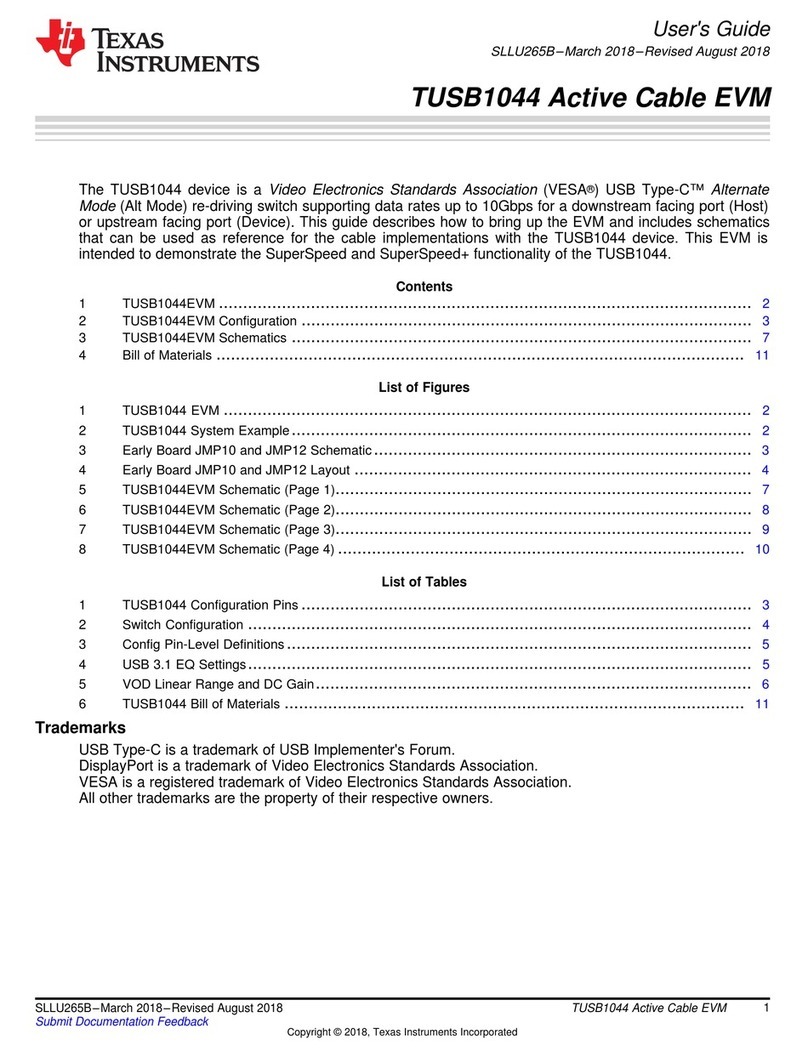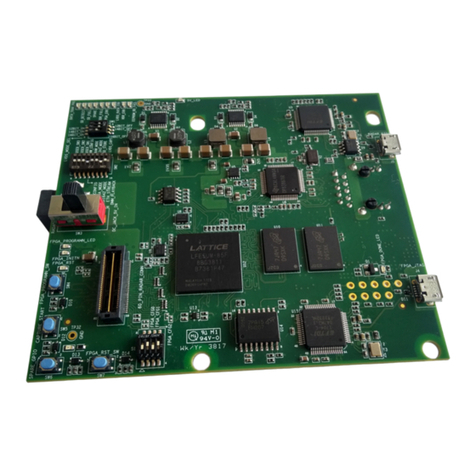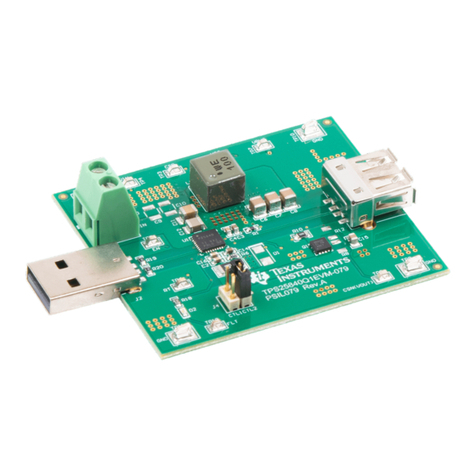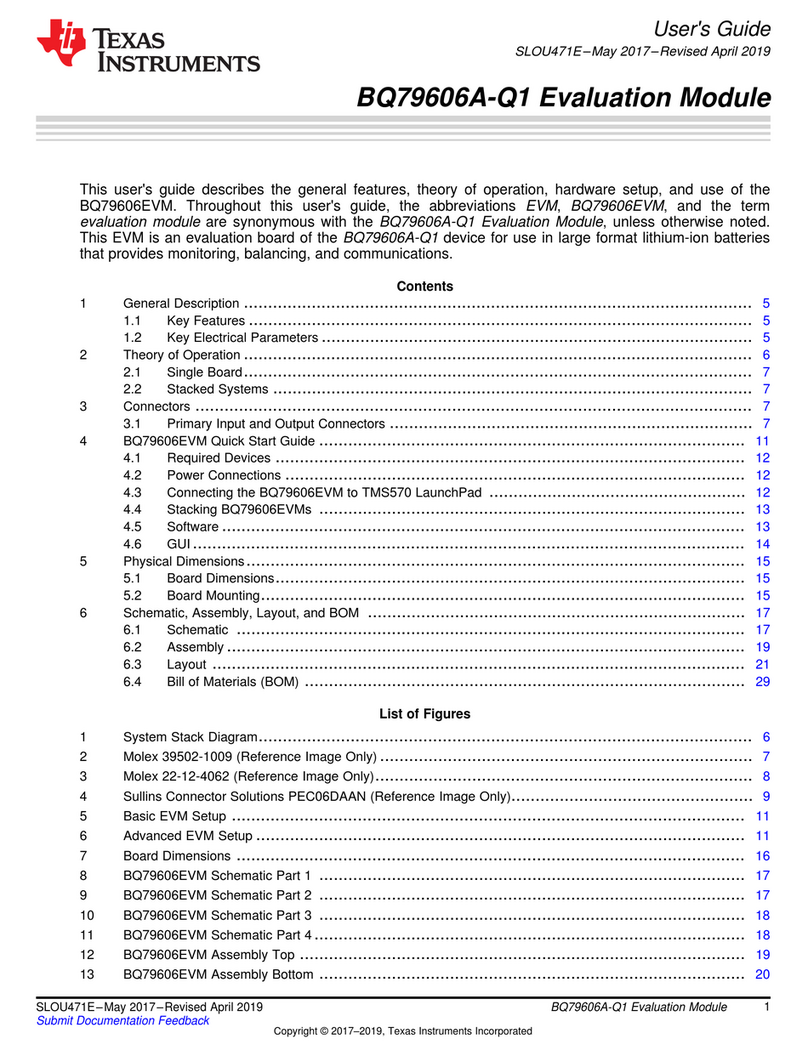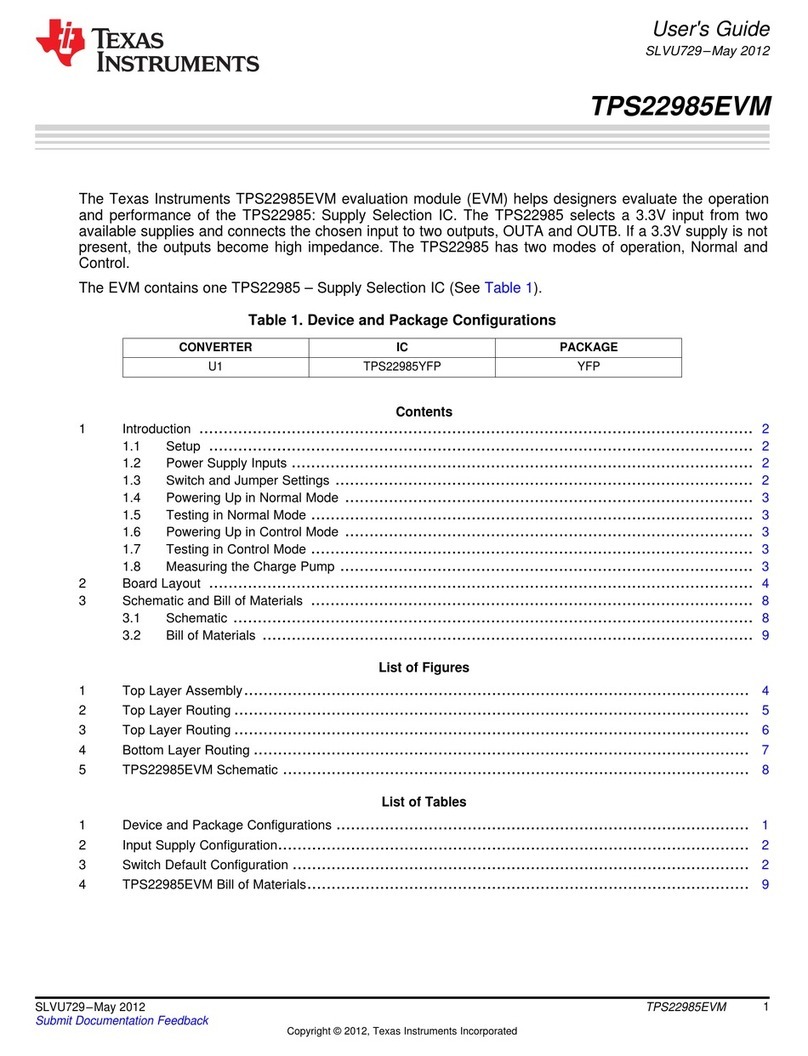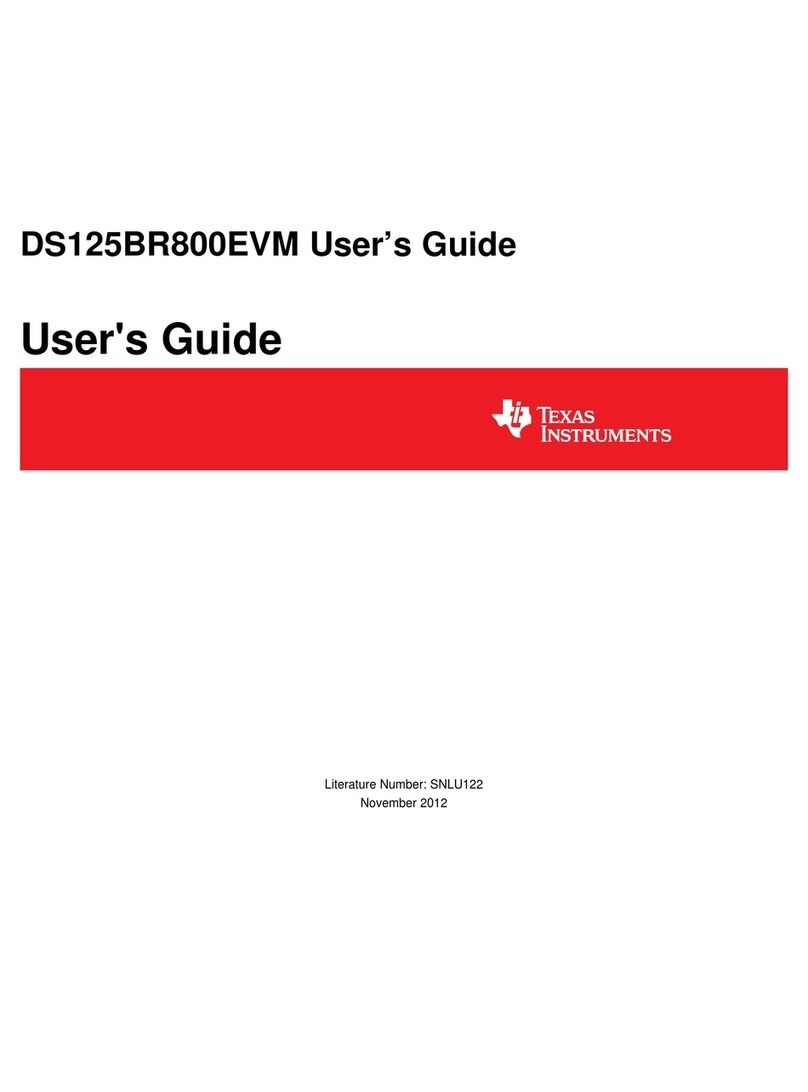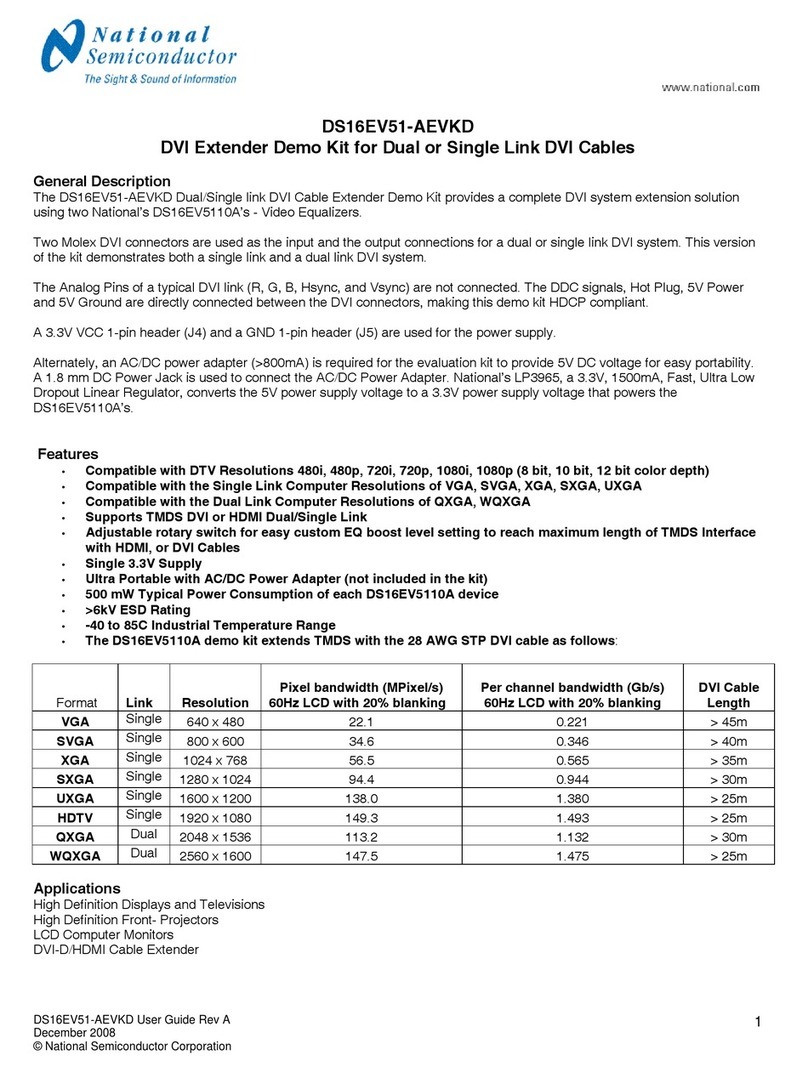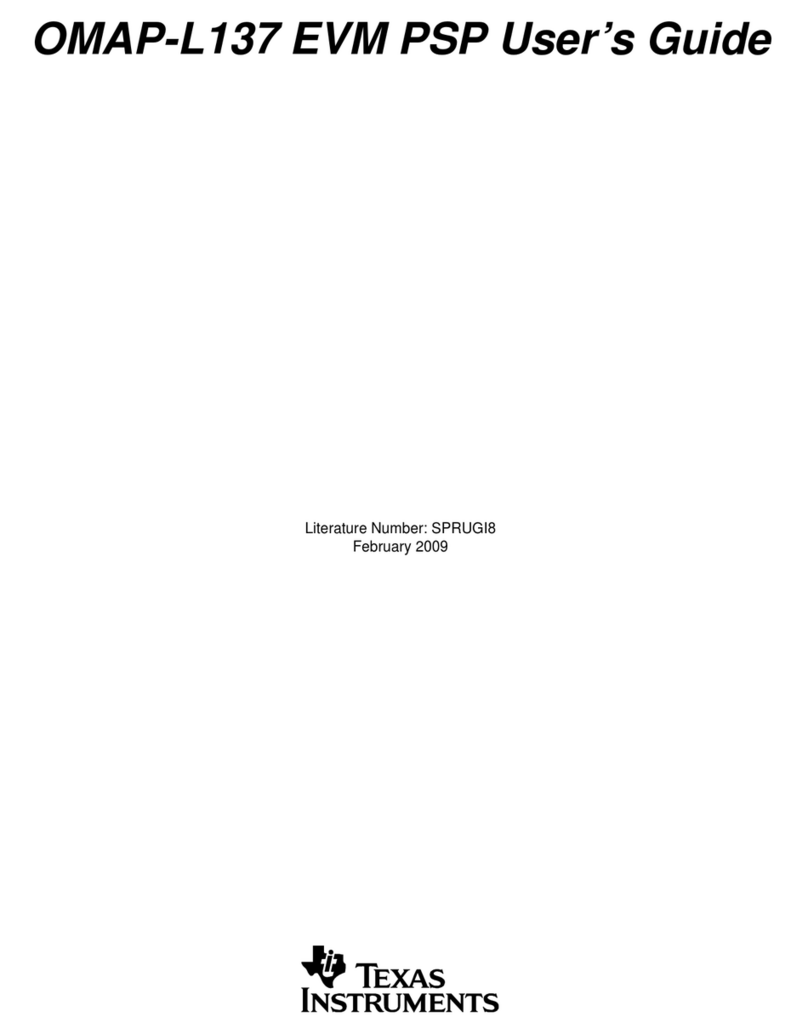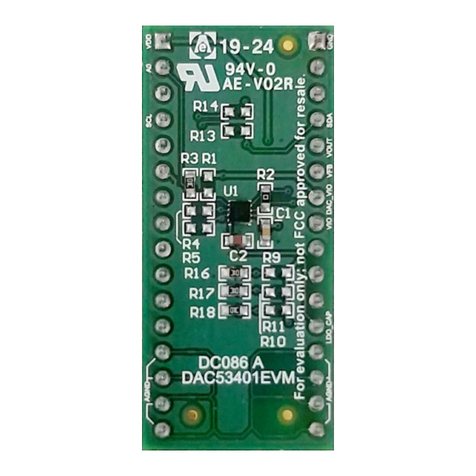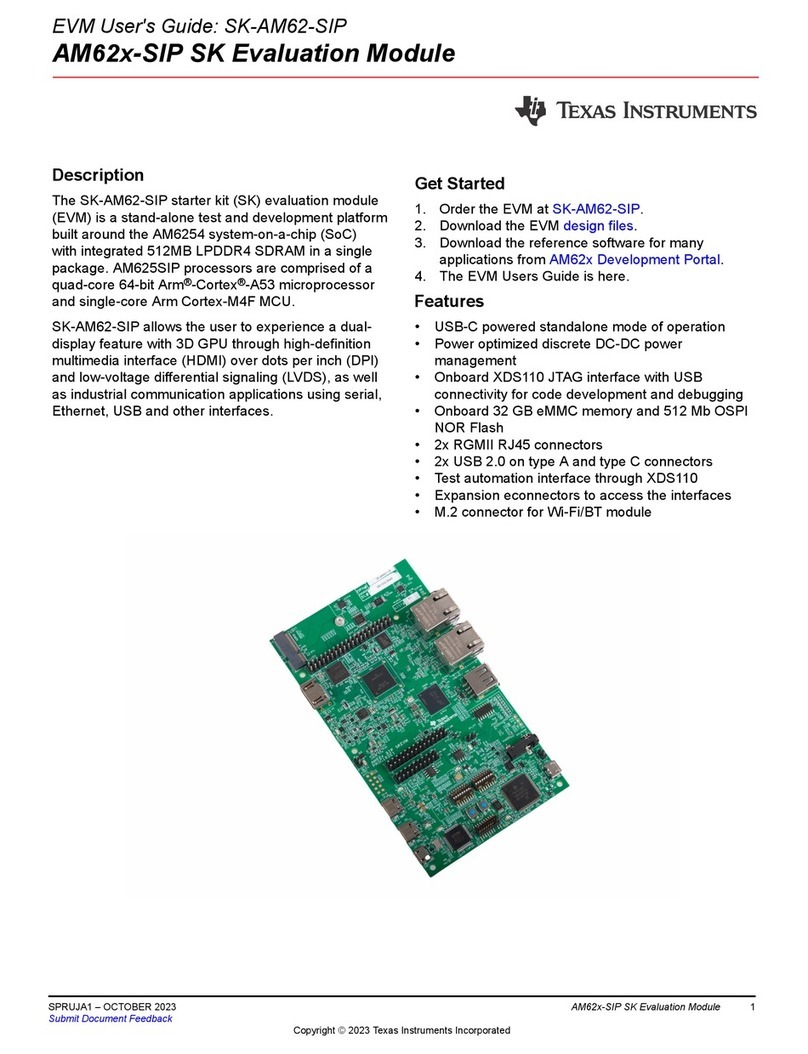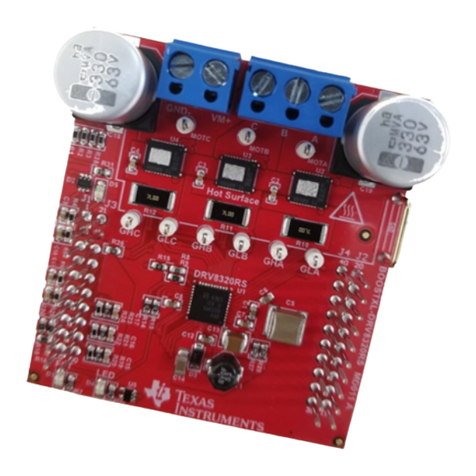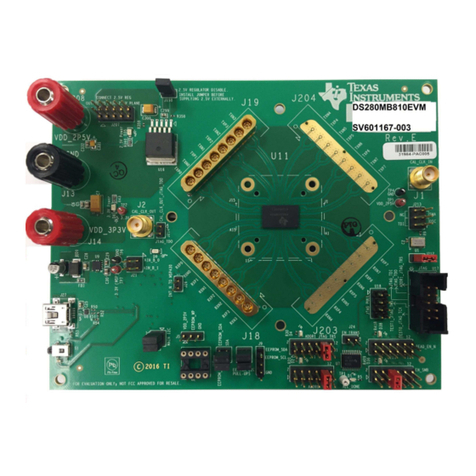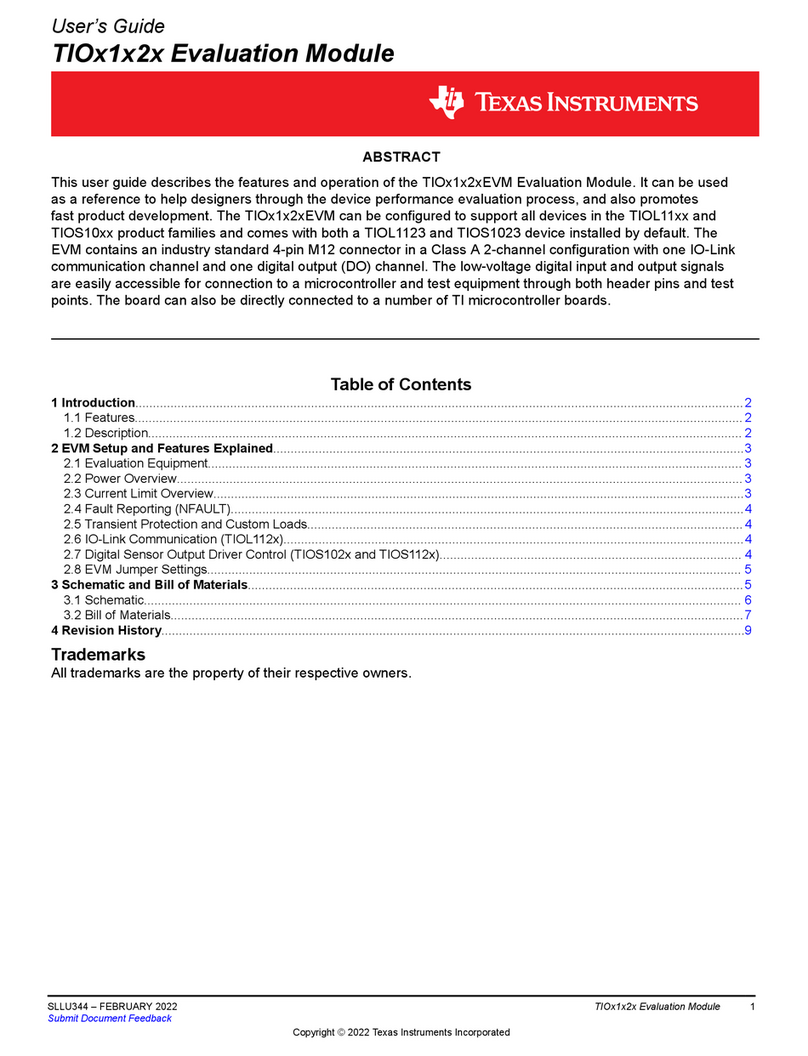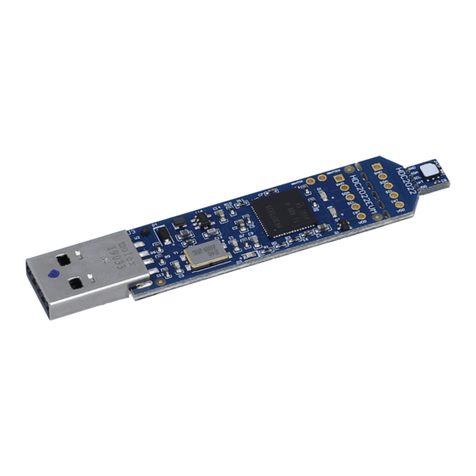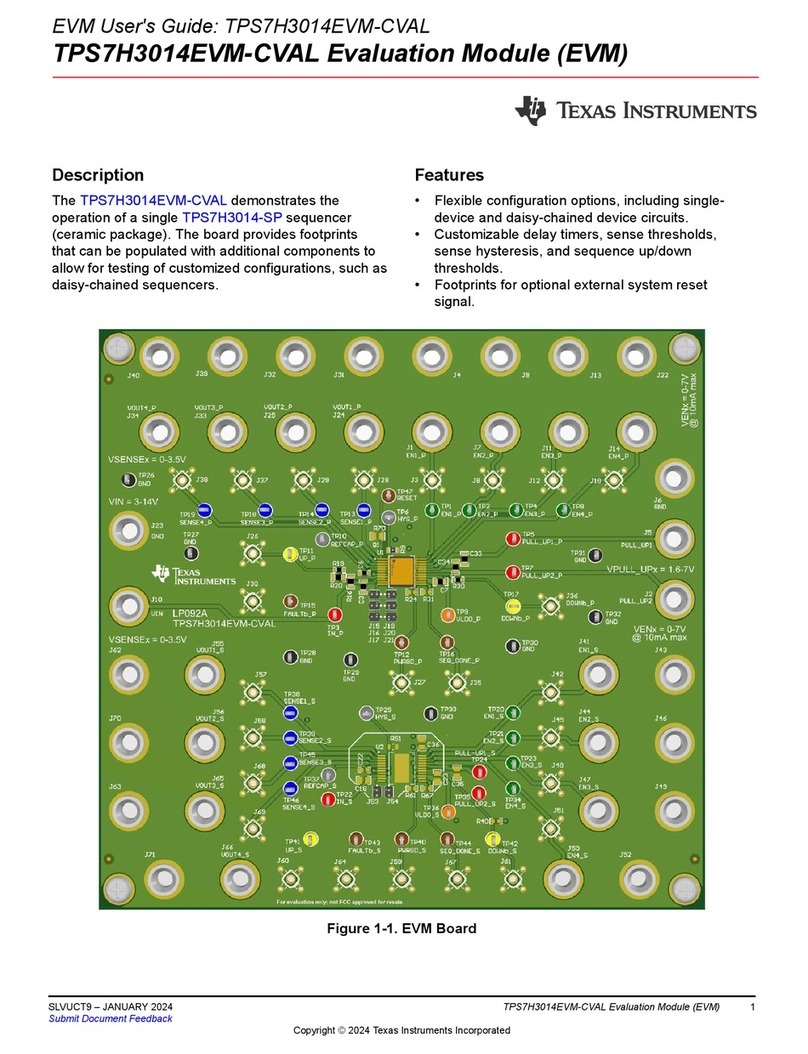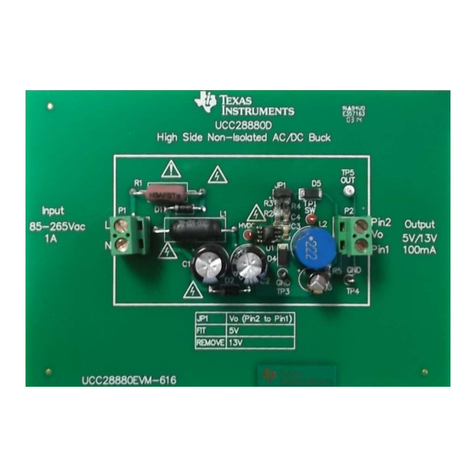
1
SPRUII5A–December 2017–Revised November 2018
Submit Documentation Feedback Copyright © 2017–2018, Texas Instruments Incorporated
DRA77xP/DRA76xP-ACD CPU EVM Board
User's Guide
SPRUII5A–December 2017–Revised November 2018
DRA77xP/DRA76xP-ACD CPU EVM Board
This user's guide is intended for software and hardware engineers developing applications for the Jacinto
6 high performance, multimedia application processor based on enhanced OMAP™ architecture
implemented with 28-nm technology. It describes the evaluation module (EVM) CPU board’s hardware,
firmware and software functions supplied by Texas Instruments Inc.
Contents
1 Introduction ................................................................................................................... 2
2 Overview...................................................................................................................... 2
3 Hardware...................................................................................................................... 8
4 Signal Multiplex Logic...................................................................................................... 23
5 Application Boards ......................................................................................................... 33
6 USB3 Supported Configurations ......................................................................................... 34
7 References.................................................................................................................. 37
List of Figures
1 CPU Board ................................................................................................................... 3
2 CPU Board - Front........................................................................................................... 6
3 CPU Board - Back........................................................................................................... 7
4 CPU Board Block Diagram................................................................................................. 8
5 Power Distribution Block Diagram......................................................................................... 9
6 Reset Structure............................................................................................................. 10
7 Mux Diagram for GPMC/QSPI............................................................................................ 24
8 Mux Diagram for GPMC/VOUT3......................................................................................... 26
9 Mux Diagram for GPMC/EMMC.......................................................................................... 26
10 Mux Diagram for VIN2A................................................................................................... 27
11 Mux Diagram for VIN2A/RGMII1......................................................................................... 28
12 Mux Diagram for McASP3/7.............................................................................................. 29
13 Mux Diagram for RGMII0/VIN1B......................................................................................... 30
14 Mux Diagram for SPI2/UART3 ........................................................................................... 31
15 Mux Diagram for DCAN2/I2C............................................................................................. 32
16 Mux Diagram for I2C/DDC................................................................................................ 33
17 RGB-to-HDMI Application Bd............................................................................................. 34
List of Tables
1 SoC EVMs/Kits............................................................................................................... 4
2 EVM Accessories............................................................................................................ 4
3 EVM Kit Truth Table......................................................................................................... 4
4 Compatible Wall Supplies (12 V, 5A, 65W)............................................................................. 10
5 Reset Signals Structure ................................................................................................... 11
6 SoC Boot Mode Switch Settings ......................................................................................... 13
7 Board Controls for Booting Options...................................................................................... 13
8 User LEDs................................................................................................................... 17
9 User Switches .............................................................................................................. 17
